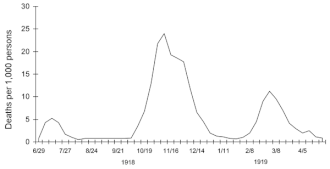ÁcrataMagallania
Madmaxista
- Desde
- 10 Jul 2014
- Mensajes
- 18.481
- Reputación
- 88.394
NUEVA YORK - La Bolsa de Nueva York se está preparando para la posible escalada de la nueva crisis de cobi19 que podría incluir el cierre del piso comercial en el Bajo Manhattan , según Fox Business.
En caso de que el brote de el bichito-19 se convierta en una esa época en el 2020 de la que yo le hablo global, como se espera, entonces los mercados y las empresas están preocupados de que los comerciantes y otros empleados no puedan llegar al trabajo.
"La Bolsa de Nueva York está comenzando a prepararse para la posibilidad de que el piso no pueda abrirse. Es una mezcla de humanos y un sistema de comercio automatizado, sistema de comercio computarizado", dijo Charles Gasparino de Fox Business en The Claman Countdown en Viernes. "Así que están planeando la posibilidad de que ... los comerciantes de piso, los corredores, los creadores de mercado designados no puedan entrar porque tienen que quedarse en casa".
Gasparino, citando sus fuentes, dijo que la NYSE tendrá "algún tipo de prueba" en unos días.
Las principales firmas de Wall Street también les dicen a sus empleados que se preparen para que la situación empeore. Esas empresas ya están restringiendo los viajes a áreas que son muy afectadas, como China y otras partes de Asia, informó Gasparino.
"'Prepárese para trabajar desde casa, pruebe sus sistemas, asegúrese de que su computadora funcione, asegúrese de poder ingresar al sistema de la empresa para comerciar'", dijo Gasparino a las firmas que les dicen a sus trabajadores.
Las acciones se hundieron nuevamente el viernes, dejando a Wall Street en su peor semana desde octubre de 2008 . Los inversores parecen estar preocupados de que el brote de cobi19 descarrile la economía mundial.
NYSE could close trading floor in cobi19 contingency | FOX 5 New York
En caso de que el brote de el bichito-19 se convierta en una esa época en el 2020 de la que yo le hablo global, como se espera, entonces los mercados y las empresas están preocupados de que los comerciantes y otros empleados no puedan llegar al trabajo.
"La Bolsa de Nueva York está comenzando a prepararse para la posibilidad de que el piso no pueda abrirse. Es una mezcla de humanos y un sistema de comercio automatizado, sistema de comercio computarizado", dijo Charles Gasparino de Fox Business en The Claman Countdown en Viernes. "Así que están planeando la posibilidad de que ... los comerciantes de piso, los corredores, los creadores de mercado designados no puedan entrar porque tienen que quedarse en casa".
Gasparino, citando sus fuentes, dijo que la NYSE tendrá "algún tipo de prueba" en unos días.
Las principales firmas de Wall Street también les dicen a sus empleados que se preparen para que la situación empeore. Esas empresas ya están restringiendo los viajes a áreas que son muy afectadas, como China y otras partes de Asia, informó Gasparino.
"'Prepárese para trabajar desde casa, pruebe sus sistemas, asegúrese de que su computadora funcione, asegúrese de poder ingresar al sistema de la empresa para comerciar'", dijo Gasparino a las firmas que les dicen a sus trabajadores.
Las acciones se hundieron nuevamente el viernes, dejando a Wall Street en su peor semana desde octubre de 2008 . Los inversores parecen estar preocupados de que el brote de cobi19 descarrile la economía mundial.
NYSE could close trading floor in cobi19 contingency | FOX 5 New York



